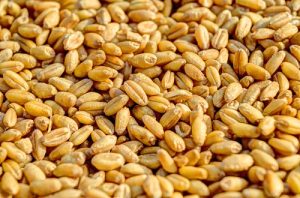 Mining and agriculture showed the best improvements in business debt conditions, according to the Experian Business Debt Index (BDI) for Q4 2017. Both sectors showed improving business health with agriculture featuring a BDI reading of 1.21 and mining at 1.14.
Mining and agriculture showed the best improvements in business debt conditions, according to the Experian Business Debt Index (BDI) for Q4 2017. Both sectors showed improving business health with agriculture featuring a BDI reading of 1.21 and mining at 1.14.
Agriculture and Mining have performed well in the latest quarter and represent the two strongest sectors on the credit risk benchmark*, according to Simon Russell, Managing Director of Experian SA.
Agriculture sector strengthens despite Western Cape challenges
While there was a small pickup in the average outstanding number of debtors’ days, agriculture was by far the strongest performing sector (with the highest BDI above the 0-benchmark level) indicating the most improved business conditions in the final quarter of 2017. Stronger output has boosted GDP significantly and led in turn to greater food security in South Africa. Agricultural GDP grew by 25.5% year-on-year in Q3 2017, the strongest such growth since 1996. This means that “for the first time in many years, thanks to agriculture’s contribution, the primary sector (comprising agriculture and mining) has outperformed the tertiary sector. Growth in this sector is critical for the country’s employment levels” says Russell.
However, the outlook for the future of agriculture in the Western Cape remains negative. The sector’s share of the provincial economy (3.5%) is about 50% more than that of agriculture’s share in the South African economy (2.4%). This does not include agriculture’s contribution to tourism and the value-add derived from food processing and job creation. Overall, agriculture in South Africa uses up 61% of total freshwater reserves, irrigating around 1,3million hectares.
Sterling mining growth but structural impediments threaten future
On the back of rising commodity prices, the mining sector recorded its third consecutive quarter of positive stable growth in Q3 2017.
After years of volatility, 2017 has brought some stability to the mining sector. This is the result of stronger world demand as growth in China, the U.S. and much of the Eurozone starts to expand. However, fundamental weaknesses in this sector remain.
According to the GFMS Gold Survey 2017 South Africa is currently the world’s most expensive country to mine gold, where decreasing mineral returns are exacerbated by costs related to doing business, labour and compliance.
“The reality is that the future of mining in South Africa is now almost entirely dependent on external improvements in commodity prices to survive,” concludes Russell. More work needs to be done to encourage strong and sustained investment and to rebuild the competitiveness of this sector.


